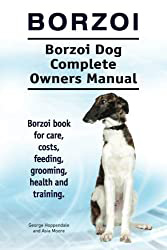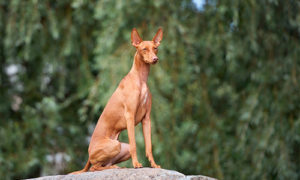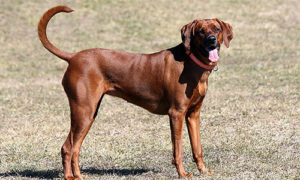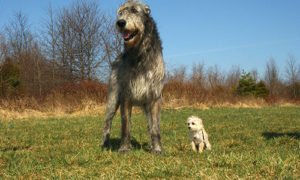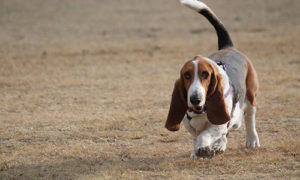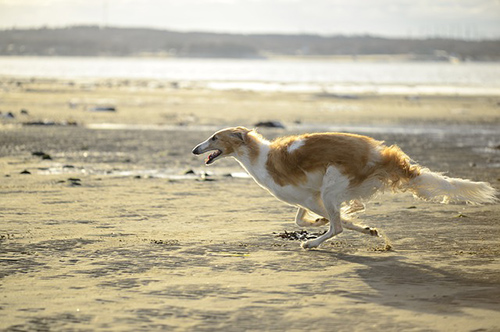
Many know the Borzoi as the Russian Wolf-hound. In fact, Russian aristocracy has been developing them for centuries. The Sport of coursing or hunting hare existed in Russia as early as the 13th century. During the 15th and 16th centuries, hunters crossed coursing hounds with bearhounds to increase their size and coat, which was important for hunting wolves in the cold climates.
During the 1600s, a book of Borzoi hunting rules included the first standard of the breed. Conceivably, there has never been another breed that has ever been the focus of hunting on such a large scale. Hunts were grand events, and it took hundreds of serfs to take care of the hounds, mainly on large estates.
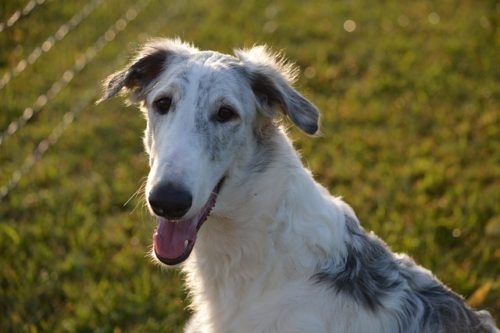
According to one account of these grand hunts, the hounds, horses, beaters, and hunters arrived in a train of over 40 cars along with another train transporting the Grand Duke and other nobility. These grand hunts comprised over 100 Borzoi. Beaters and scenthounds trailed the wolves, while the hunters trailed on horseback. They would release two or three Borzoi comprising 2 males, and they would unleash a female when the wolf was in sight.
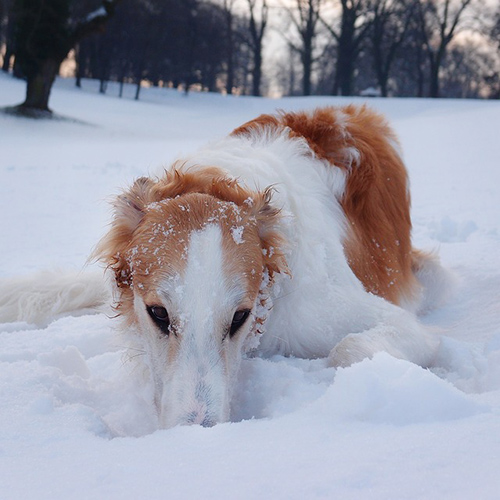
The dogs would normally attack, holding the wolf until the hunters arrived to bind the wolf. They then set the wolf free. Seven distinct subtypes of Borzoi existed in Russia during the 1800s. Today, most Borzoi are descendants of the Perchino type kept by the Grand Duke Nicolai Nicolayevitch. Also, many of the American imports came directly from the Perchino Kennels.
The Russian Czar will usually present the Borzoi as gifts to visiting royalty. Unfortunately, after the Russian revolution, many Borzoi’s lost their lives because the days of nobility were over. Thankfully, the breed got rescued by foreign royalty who received the dogs as gifts and a few remaining Borzoi kennels.
The breed quickly gained a reputation as a glamour dog in America and often accompanied movie stars. Although they are not very popular as a pet, the Borzoi remains popular as a coursing dog, model, and show dog.
Borzoi Breed Facts
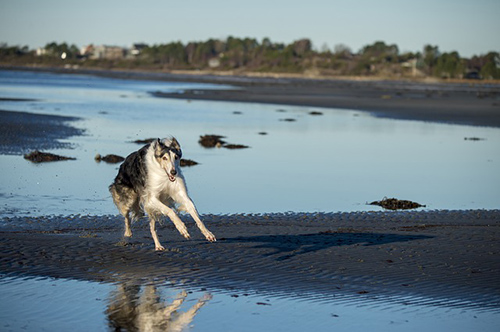
Temperament: This dog is a quiet and elegant breed that exemplifies the well-behaved house dog indoors. However, when outside it runs like a wild dog and will chase any small animal it sees.
It is a very sensitive dog, but it is also independent. It is good with children. However, it may not be as playful as children prefer. It can be timid and cautious with strangers.
Upkeep: This breed will need to exercise daily. Long walks in the park are usually ok. However, sprints in a large secure area should coincide with long walks. The coat is routinely fuller on males, will need brushing or combing 2 to 3 times weekly. They are notorious shedders.
- Popularity: Fairly common
- Family: Sighthound
- Origin: Russia
- Date Developed: Middle ages
- Past Function: Hunting wolves
- Current Function: Lure Coursing
- Other names: Russian Wolfhound
- Life Expectancy: 10–12 years
- Weight: Male: 75–105 pound; Female: 60–85 pounds
- Height: Male: 28 to 30 inches; Female: 26 to 28 inches
Color: Any
Group: The Hound Group
Health Problems: Gastric torsion, cardiomyopathy, hypothyroidism, degenerative myelopathy
Characteristics
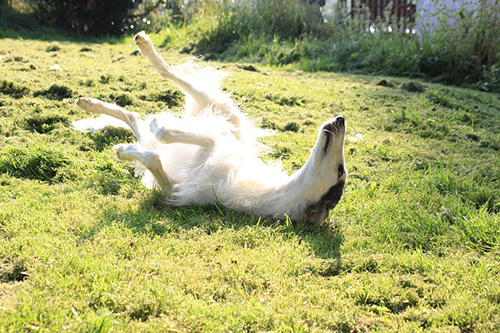
The Borzoi is a running hound and more than capable of hunting large, fierce game in cold climates. In addition, Their Greyhound physique enables them to run at great speeds.
However, they’re much larger and stronger than the Greyhound. Their jaws are strong enough to hold down wolves. They’re well protected from the cold weather and snow thanks to their long, silky coat.
Their coat can be flat, wavy, or rather curly. The Borzoi should have elegance and grace, with smooth lines, whether upright or moving.

